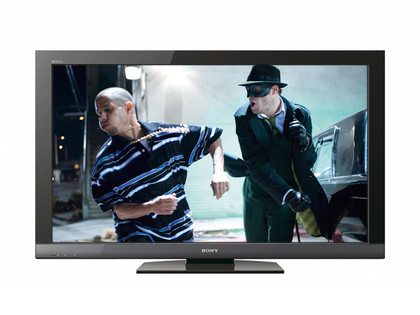Why you can trust TechRadar

The biggest improvement on last year's equivalent models is in black level response. Dark scenes are more believable and natural, thanks to a marked reduction in obvious grey clouding over parts of the picture that should look black.
As often happens when black levels improve, moreover, colours are also more natural and are satisfyingly richly saturated.
The 37EX403 retains Sony's long-noted talent for making high quality HD sources look crisp and detailed, at least where static material is concerned. Brightness levels are high and consistent across the screen, despite the set's use of standard CCFL lighting.
Unfortunately, though, the 37EX403's sharpness takes a noticeable hit whenever there's much motion. In fact, when you first turn the TV on from cold, pictures can look pretty nasty, with extreme amounts of blurring and smearing.
Thankfully, this calms down considerably after you've had the TV on for half an hour or so, but it still seems peculiar to have to wait for a contemporary TV to warm up for such a long time.
To be fair, the amount of residual motion blur once the TV hits its stride isn't bad compared to other sub-£600 LCDs of this size, but there's enough of it around to make stepping up to Sony's 100Hz-equipped 37EX503, or one of Samsung's current, similarly priced sets, worth considering.
Another, lesser, issue you should be aware of is a gentle lack of subtlety in rendering tricky, subtly differentiated colours. This can leave some areas, especially skin tones, looking slightly waxy and unrealistic.
Finally, as usual with LCD TVs, the 37EX403's pictures lose both contrast and colour saturation if viewed from a wide angle. Though to be fair, the 37EX403 doesn't suffer as drastically from this as many rival LCD TVs and it also benefits from impressively uniform backlighting.
Current page: Sony Bravia KDL37EX403: Picture quality
Prev Page Sony Bravia KDL37EX403: Features Next Page Sony KDL37EX403: Sound, value, ease of useJohn has been writing about home entertainment technology for more than two decades - an especially impressive feat considering he still claims to only be 35 years old (yeah, right). In that time he’s reviewed hundreds if not thousands of TVs, projectors and speakers, and spent frankly far too long sitting by himself in a dark room.

